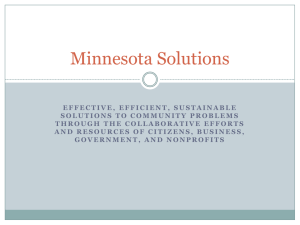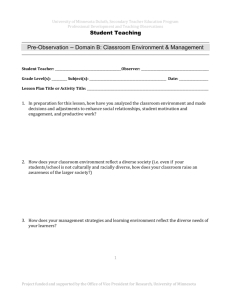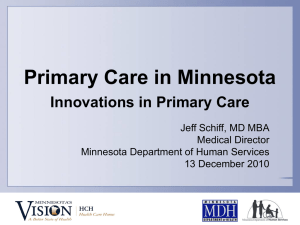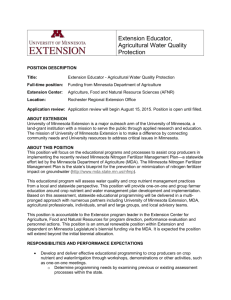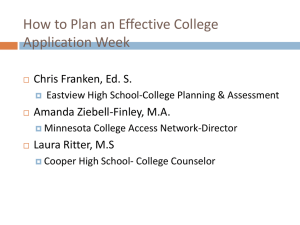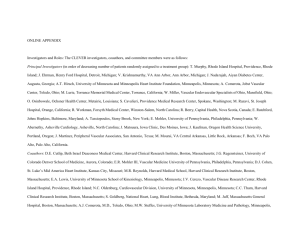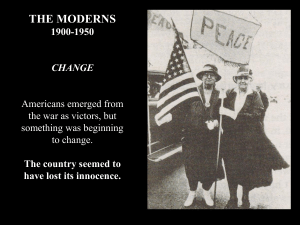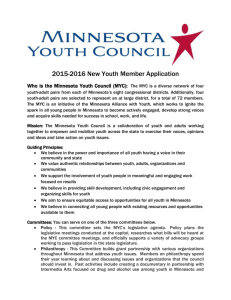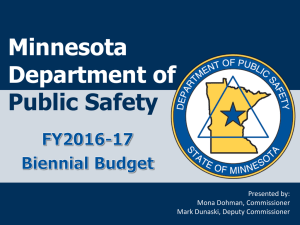Stinson and Gillaspy Presentation
advertisement
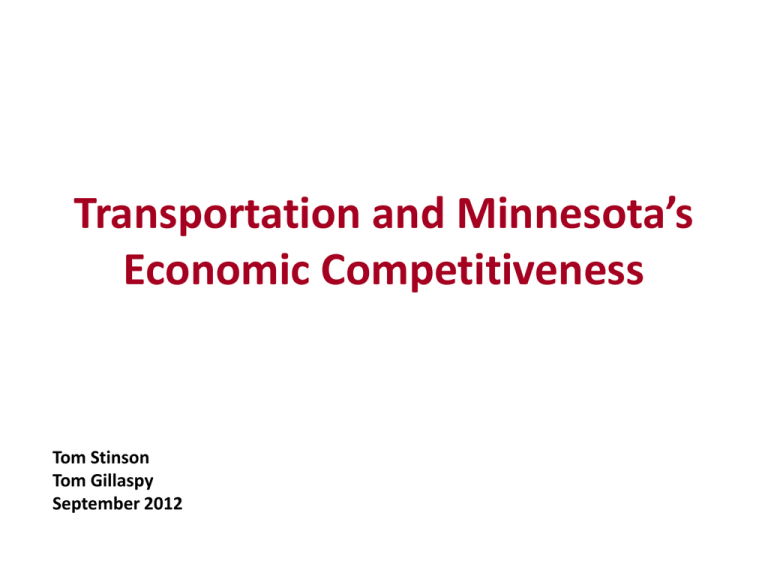
Transportation and Minnesota’s Economic Competitiveness Tom Stinson Tom Gillaspy September 2012 We Are Headed to a New Normal • The Great Recession is over and the economy is growing -- but we will not return to where we once were • We are moving to a New Normal • The U.S. is not alone -- it is happening globally • Those who recognize this and adapt first will be most successful • The next four years will be critical Minnesota Has Been Very Successful Especially For A Cold Weather State at the End of the Road • Our economic growth rate has exceeded the national average • Our population growth rate leads the frost belt • We rank with the leaders on many social and economic indicators • Education has been a key contributor to the state’s success Minnesota’s Per Capita Personal Income Exceeds the U.S. Average by 7.2 Percent • Minnesota ranked 12th in personal income per capita in 2011 - - - In 1960 Minnesota ranked 25th - - - In 1960 per capita personal income in Minnesota was 95 percent of the U.S. average • Personal income per capita grew at an average annual rate of 6.1 percent between 1960 and 2011. The national rate of growth was 5.9% A Tale of Two Economies Per Capita Personal Income, 1960-2010 % of US Average 130 CA, 125 CA, 118 120 CA, 118 CA, 111 110 US Avg. MN, 107 MN, 107 CA, 106 100 MN, 99 90 CA, 109 MN, 101 MN, 102 MN, 94 80 1960 1970 1980 1990 2000 2010 Minnesota’s Current Success Is Due to Decisions Made 50+ Years Ago • Far sighted private sector and public sector decision makers established the foundation for growth in Minnesota’s economy • Dealing with challenges brought by the baby boom was a key to our success • Wise investments were made Recent Economic and Demographic Events Have Changed the Outlook for as Far as We Can See This Recovery Has Been Slower Than Those in the Past Convergence of Population Growth Rates Census Bureau estimates, 2000-09 aligned with 2010 Census Minnesota’s Population Will Continue To Grow Albeit At A Slower Rate The Number Of Minnesotans Turning Age 65 Is Increasing Sharply This Year Census ACS and counts and Mn State Demographer forecasts, the 2012 increase is 36% More 65+ Than School Age by 2020 Census counts & State Demographer projection, revised Jan 2012 From 2010 to 2020, Minnesota Will See Large Increases Age 50s and 60s 85+ 80-84 75-79 70-74 65-69 60-64 55-59 50-54 45-49 40-44 35-39 30-34 25-29 20-24 15-19 10-14 5-9 0-4 16,500 8,440 41,400 91,370 112,540 102,960 54,240 -42,310 -63,650 -2,680 61,920 47,950 -9,980 -30,680 Source: Minnesota State Demographic Center, rev 2007 Numbers are rounded 5,050 47,330 36,190 20,150 Annual Percent Change Minnesota Total Labor Force Minnesota State Demographer forecast, revised January 2012 Gillaspy Demographics www.gilldem.com Economic Facts of Life Standard of Living depends on output per resident Output = Output per Hour * Hours Worked If the ratio of workers to residents declines productivity will need to increase if we are to maintain our current living standard The Old Normal + The Great Recession + Long Run Demographic Changes = The New Normal The “New Normal” Probably Means • Labor and talent will be the scarce resources • Slower economic growth • A single-minded focus on productivity • Higher interest rates • A change in the land rent gradient • Chronic government deficits & cuts in service • Increasing numbers of retirees • A more diverse population • More uncertainty about the future The Third Industrial Revolution Is Transforming Economic Activity Advances in robotics, materials, software, bioengineering, and the web are fundamentally changing where and how economic activity takes place. Innovation is replacing physical capital as the foundation of economic growth. Physical location will be less important and those bound to it will find competition increasingly difficult. WWW.GILLDEM.COM Economic Fact of Life #2 • Productivity depends on – The stock of physical capital – The stock of human capital • Education • Health status – The stock of infrastructure – Advancements in technology Productivity Is Not Just Producing at a Lower Cost Increasing Productivity Also Means Making things better (improved quality) Making better things (innovation, new products) Focusing Just On Reducing Costs May Be Short Sighted Long term growth will require innovation and quality improvements The New 3 R’s for Economic Success in the 21st Century Retention Recruitment Retraining Transportation Systems and Competitiveness in the New Normal Traditional Focus: • Markets for Minnesota commodities • Markets for Minnesota products and services Expanded View: • Transportation system as an amenity • Time cost of commuting a recruiting plus Funding Transportation Systems Will Be a Challenge in the New Normal • Seniors will be a greater percentage of the electorate – Issues of health care and aging will grow in importance – Tax increases will continue to be unpopular • Current financing sources may not generate the revenue needed to meet future needs • Traditional support groups may be less successful in gaining resources for transportation The Fiscal Catch-22 If we don’t make the necessary public investments in human capital, research and infrastructure, then we won’t have the productivity gains needed to provide the resources to make those investments in the future




